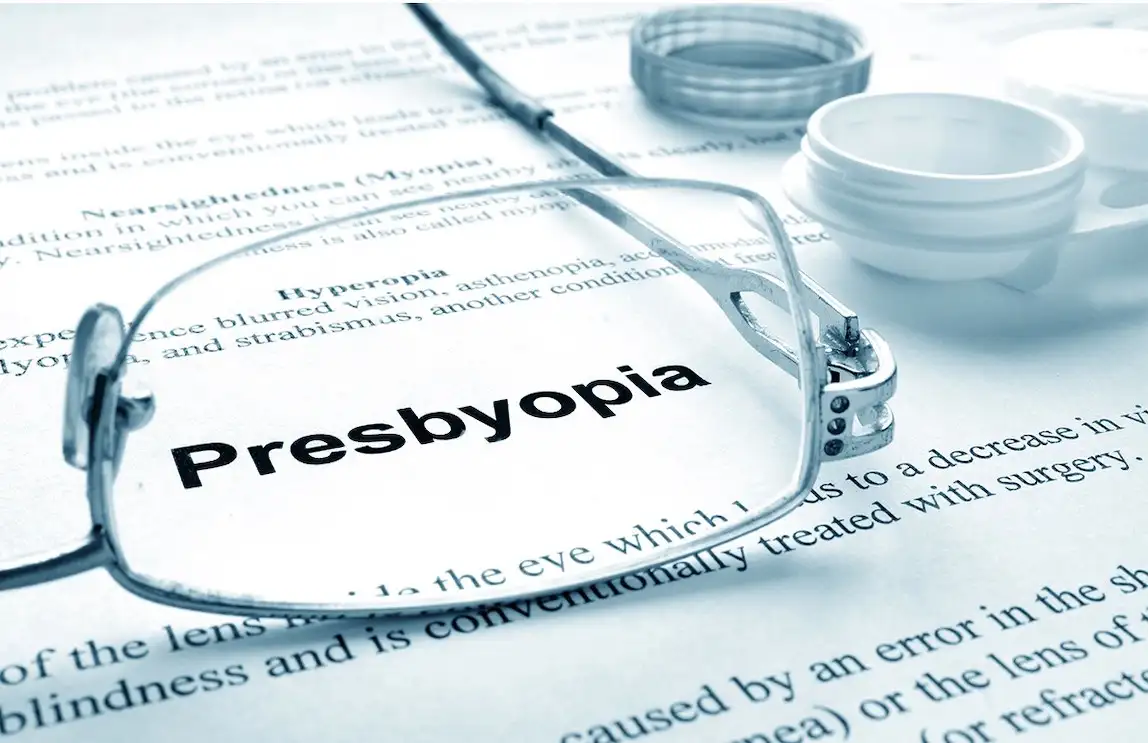Presbyopia, or the age-related loss of near vision, is a frustrating vision problem that affects nearly everybody as they enter middle age. At Southern Eye Group, we help patients in Alabama, Florida, Mississippi and throughout the Gulf Coast overcome the challenges of presbyopia with a full range of treatment options.

What is Presbyopia?
Over time, the natural lens of the eye becomes more rigid and is less able to flex for focusing on close-up objects. This is presbyopia, or age-related close vision loss. Presbyopia begins to affect everybody at
Trusted Source
What is Presbyopia?
American Academy of Ophthalmology
Go to Source
around the age of 40.

Symptoms of Presbyopia
Presbyopia symptoms usually begin to present in the early 40s and
Trusted Source
Presbyopia
National Eye Institute
Go to Source
may include:
- Blurred vision or difficulty focusing on reading or up-close objects
- Recent trouble reading small print
- Difficulty seeing clearly when transitioning from near vision to distance vision
- Trouble seeing well in low light
- A new need for reading glasses, even when wearing contact lenses
- Eye strain
- The need to hold reading materials at arm’s length

Who Gets Presbyopia?
Nearly everybody begins to develop age-related near vision loss in their forties, but some people may be at a greater risk for developing presbyopia or for developing it earlier. Risk factors for presbyopia
Trusted Source
Presbyopia
Mayo Clinic
Go to Source
include:
- Hyperopia (farsightedness)
- Diabetes
- Cardiovascular disease
- Anemia
- Multiple sclerosis
- Eye injury or trauma
Presbyopia Treatment Options
At Southern Eye Group, we offer customized treatment for the correction of presbyopia.
Corrective Eyewear
The fastest and easiest treatment for presbyopia is corrective eyewear. For patients who prefer not to use reading glasses (cheaters), bifocals, or eyeglasses with progressive lenses, we offer more hassle-free methods of presbyopia treatment.
VUITY™ Drops
VUITY eye drops are a revolutionary treatment that helps to temporarily correct presbyopia. These eye drops are FDA approved and contain a medication called pilocarpine. Pilocarpine works to temporarily constrict the pupils, making it easier to focus on objects up close. Patients only require one VUITY drop in each eye in the morning, and the effects last for up to 6 hours. With VUITY, patients are able to engage in tasks like reading and focusing on close objects without reading glasses, typically
Trusted Source
A Multi-Center, Double-Masked Evaluation of the Efficacy and Safety of CSF-1 in the Treatment of Presbyopia
Orasis Pharmaceuticals Ltd
Go to Source
gaining 3 or more
lines of vision.
Refractive Lens Exchange (RLE)
Refractive lens exchange is a procedure where an artificial intraocular lens (IOL) is implanted in the eye in place of the natural lens to correct refractive errors. The quick procedure is identical to cataract surgery, except that it is performed on an elective basis to improve vision. In addition to treating presbyopia, RLE can also treat nearsightedness (myopia), farsightedness (hyperopia), and astigmatism. Refractive lens exchange also prevents the need for cataract surgery in the future.
Monovision
Monovision, sometimes referred to as blended vision, is the practice of correcting one eye for distance vision and the other for near or intermediate vision. The brain then combines images from both eyes to create clear vision at a wide range. Monovision can be achieved using different IOLs during refractive lens exchange or cataract surgery as well as through vision correction or refractive surgery such as LASIK or PRK. Some patients may find it difficult to adapt to monovision, so we often trial this solution with contact lenses before surgery.
Frequently Asked Questions About Presbyopia
Can people with 20/20 vision still get presbyopia?
Yes. Presbyopia happens to everybody, as the lenses of the eyes gradually harden and lose elasticity over time.
Can presbyopia be prevented?
Presbyopia is part of the natural aging process of the eye and can’t be prevented.
Can LASIK cure or treat presbyopia?
While LASIK can’t technically cure presbyopia, it can make it easier for a patient to see without reading glasses. Through monovision LASIK, we can correct one eye for close and one for distance. The brain then combines these images to create clearer vision at a range of distances.
Patients who undergo LASIK at a younger age are still subject to the aging process that causes presbyopia. If you begin to notice the effects of presbyopia after LASIK, discuss your options with your ophthalmologist.

Contact Southern Eye Group
At Southern Eye Group, patients from Alabama, Florida, Mississippi and throughout the Gulf Coast trust us to provide them with comprehensive eye care and the most advanced vision solutions. If you are noticing the effects of presbyopia, please contact us to schedule an eye exam and consultation with an eye health specialist.
1. American Academy of Ophthalmology. What is Presbyopia? Available: https://www.aao.org/eye-health/diseases/what-is-presbyopia. Accessed June 3, 2022
2. National Eye Institute. Presbyopia. Available: https://www.nei.nih.gov/learn-about-eye-health/eye-conditions-and-diseases/presbyopia. Accessed June 3, 2022.
3. Mayo Clinic. Presbyopia. Available: https://www.mayoclinic.org/diseases-conditions/presbyopia/symptoms-causes/syc-20363328. Accessed June 3, 2022.
4. Orasis Pharmaceuticals Ltd. A Multi-Center, Double-Masked Evaluation of the Efficacy and Safety of CSF-1 in the Treatment of Presbyopia. ClinicalTrials.gov. 21 March 2019. Available at: https://clinicaltrials.gov/ct2/show/NCT03885011?term=NCT03885011&draw=2&rank=1. Accessed June 3, 2022.
The doctors at Southern Eye Group have either authored or reviewed and approved this content.
Page Updated:


